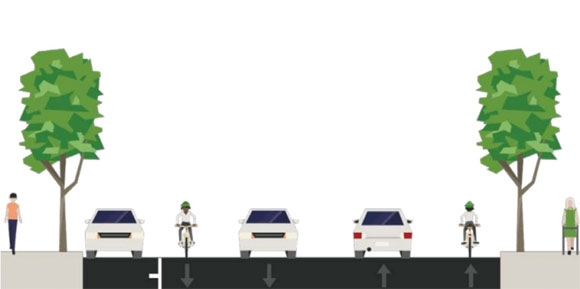2nd Avenue Bike Lane Will Fill a Gap in Denver’s Bike Network

Denver Public Works plans to paint un-protected bike lanes on West 2nd Avenue in Barnum, between Lowell Boulevard and Federal Boulevard, in May. It’s just a half-mile stretch, but combined with a second phase planned for later in 2016, the new lanes will fill a gap in the city’s bike network.
The bike lanes will connect to the Weir Gulch bike trail and the Knox Court bike lanes, added last year. In a second phase planned for later this year, DPW will extend the 2nd Avenue bike lane past hectic Federal Boulevard and east to the Platte River Trail.
“That’s something we heard from the community — that they really want to see more connectivity from the neighborhood to the trails,” said DPW bike planner Rachael Bronson.
Creating a safe design for cyclists to cross Federal will be complicated by the fact that 2nd Ave does not continue in a straight line through the intersection. For now, people on bikes will be allowed to use the sidewalk on that part of Federal to jog between the two segments of 2nd Avenue.

The streets of Barnum are notorious for fast traffic that makes it intimidating to bike or walk. DPW bike planners hope to calm traffic with the bike lanes, which will narrow the street and delineate space for both drivers and people on bikes.
To move people on bikes more safely, the 2nd Avenue bike lanes will claim some parking spaces. The residential street has lots of off-street parking, and there’s way more on-street parking spaces than people currently use, according to the city’s parking utilization study.
Crews will also paint a center line down 2nd Avenue, but that may have the opposite of the intended effect. Research has shown that drivers actually travel at safer speeds on streets without center lines, since a center marking makes people more comfortable driving faster.
Other cities, including Portland and Chicago, rely on measures like speed humps, chicanes, small roundabouts, and traffic diverters to create comfortable biking conditions on residential streets like 2nd Avenue.


